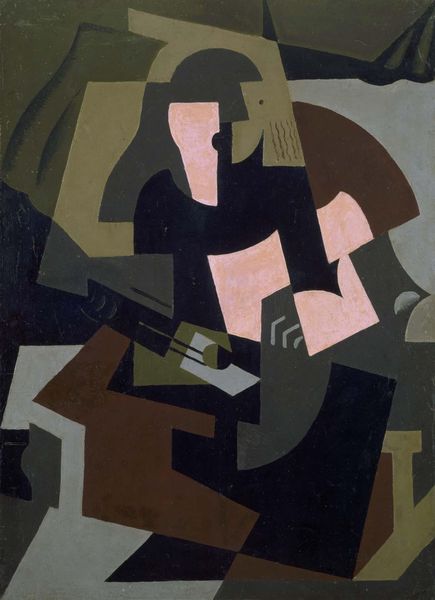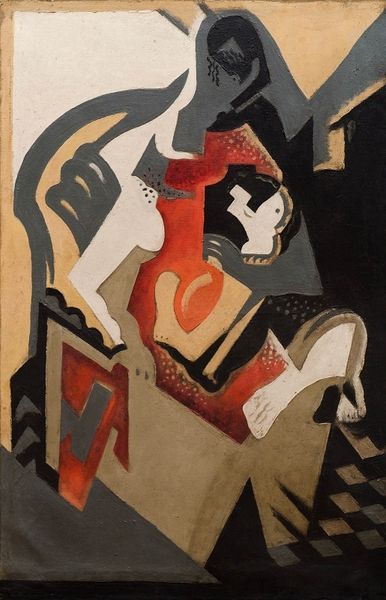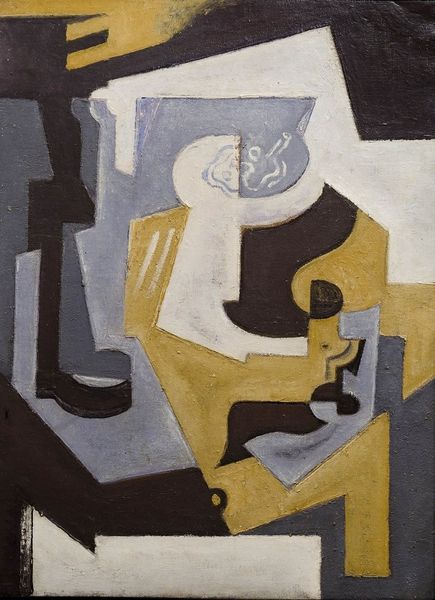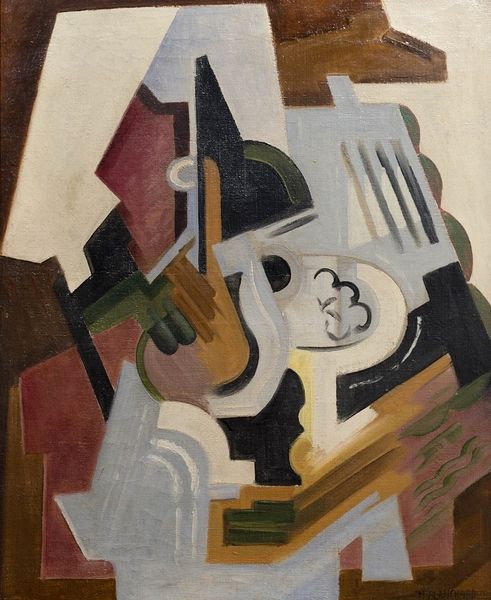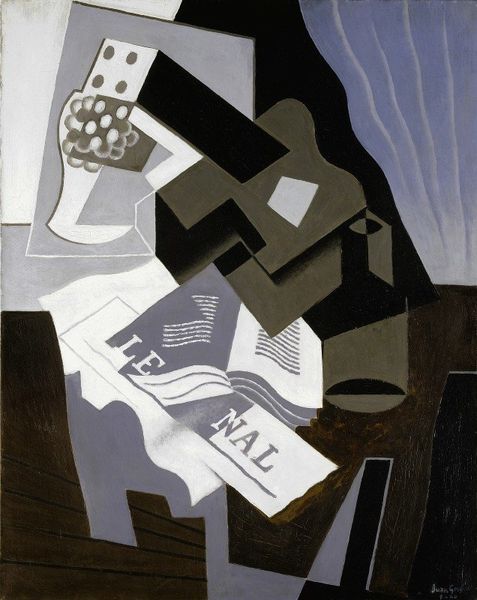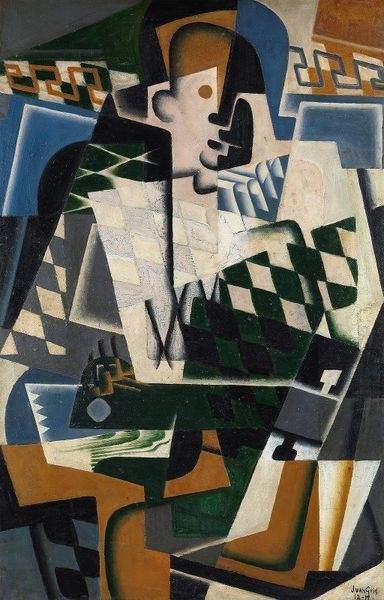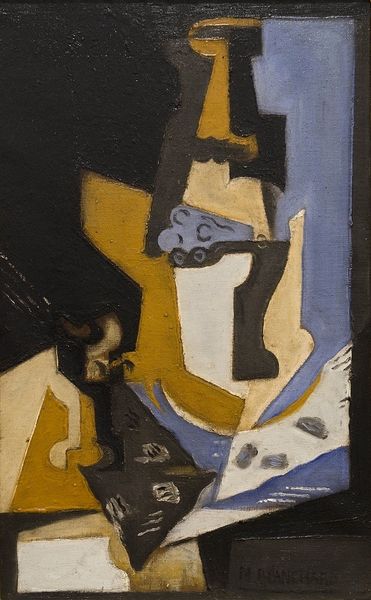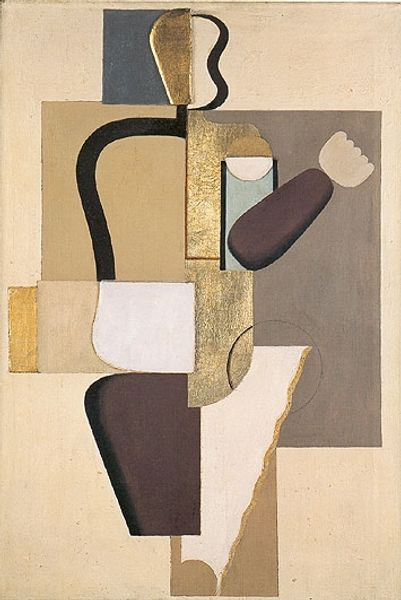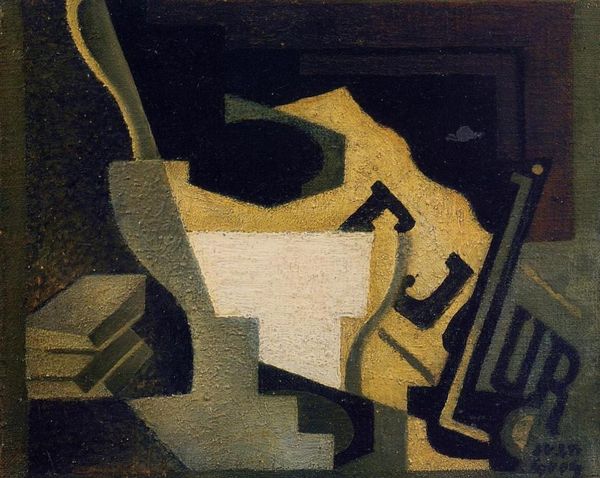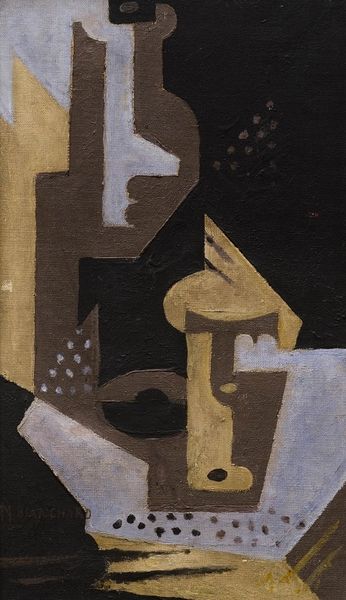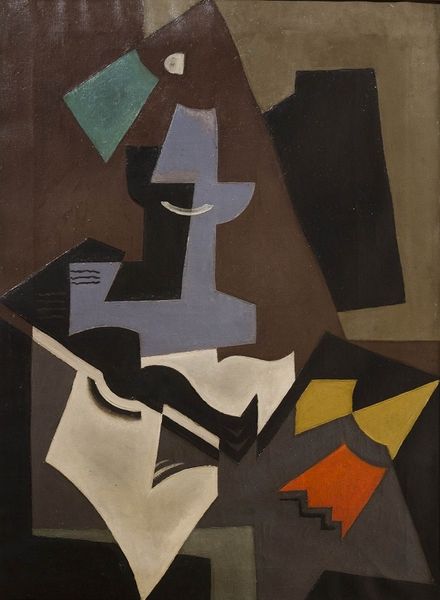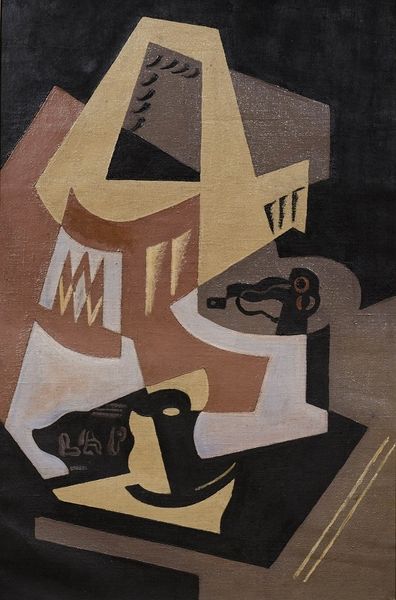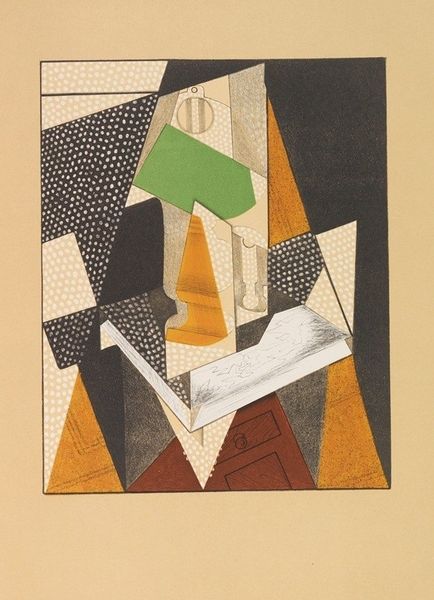
painting, oil-paint
#
cubism
#
painting
#
oil-paint
#
abstract
#
geometric
#
modernism
Copyright: Public Domain: Artvee
Curator: Here we have Juan Gris’s “Wine Jug and Glass,” a 1916 oil painting exemplifying the Synthetic Cubist style. Editor: My initial reaction is a sense of constrained revelry, almost like a celebration viewed through a distorted lens of the sociopolitical restrictions around World War I. The muted colors—mostly browns and greys—and the fracturing of forms give it this fractured sense of unease. Curator: Absolutely. Gris's simplification of objects into geometric forms really shows the influence of Cézanne's idea of treating nature in terms of the cylinder, the sphere and the cone. This isn’t merely an image of a wine jug and glass, but an exploration of their essential structure. Look at how he uses color planes to define space. Editor: And isn't that fragmentation reflective of a broader societal splintering? 1916 was a period marked by trench warfare, political upheaval, and societal restructuring in response to modern technology. Even domestic activities like leisurely drinking wine would have been imbued with wartime anxiety. The very act of fragmentation mirrors the war-torn social fabric. Curator: That's a compelling perspective. What stands out for me is the way the overlapping shapes create both depth and flatness. He's pushing against traditional Renaissance perspective. The viewer must actively piece together the forms in their own mind, to reconstitute the image. Editor: The subdued palette also plays a part in my reading. These aren’t vibrant, celebratory colors, but more subdued and muted. And consider who might have been drinking that wine in 1916. Perhaps a soldier, waiting to be sent to war? Or, someone wealthy benefitting from global suffering? These aren't simple, innocent shapes to me. Curator: True, one could argue that Synthetic Cubism is less radical than its earlier Analytical phase, as it recombines existing forms, but in so doing, Gris offers a distilled essence of his subjects. Editor: Perhaps he is, consciously or unconsciously, reflecting a world attempting to find new shapes from what was shattered, reflecting hope while living in a difficult moment in world history. Curator: It gives one a renewed appreciation for the complex dialogues present even in what seem like simple still lifes. Editor: Indeed. This painting certainly encourages a richer contextual conversation beyond the shapes and colors, deepening my understanding and perhaps my empathy for the era in which it was produced.
Comments
No comments
Be the first to comment and join the conversation on the ultimate creative platform.
